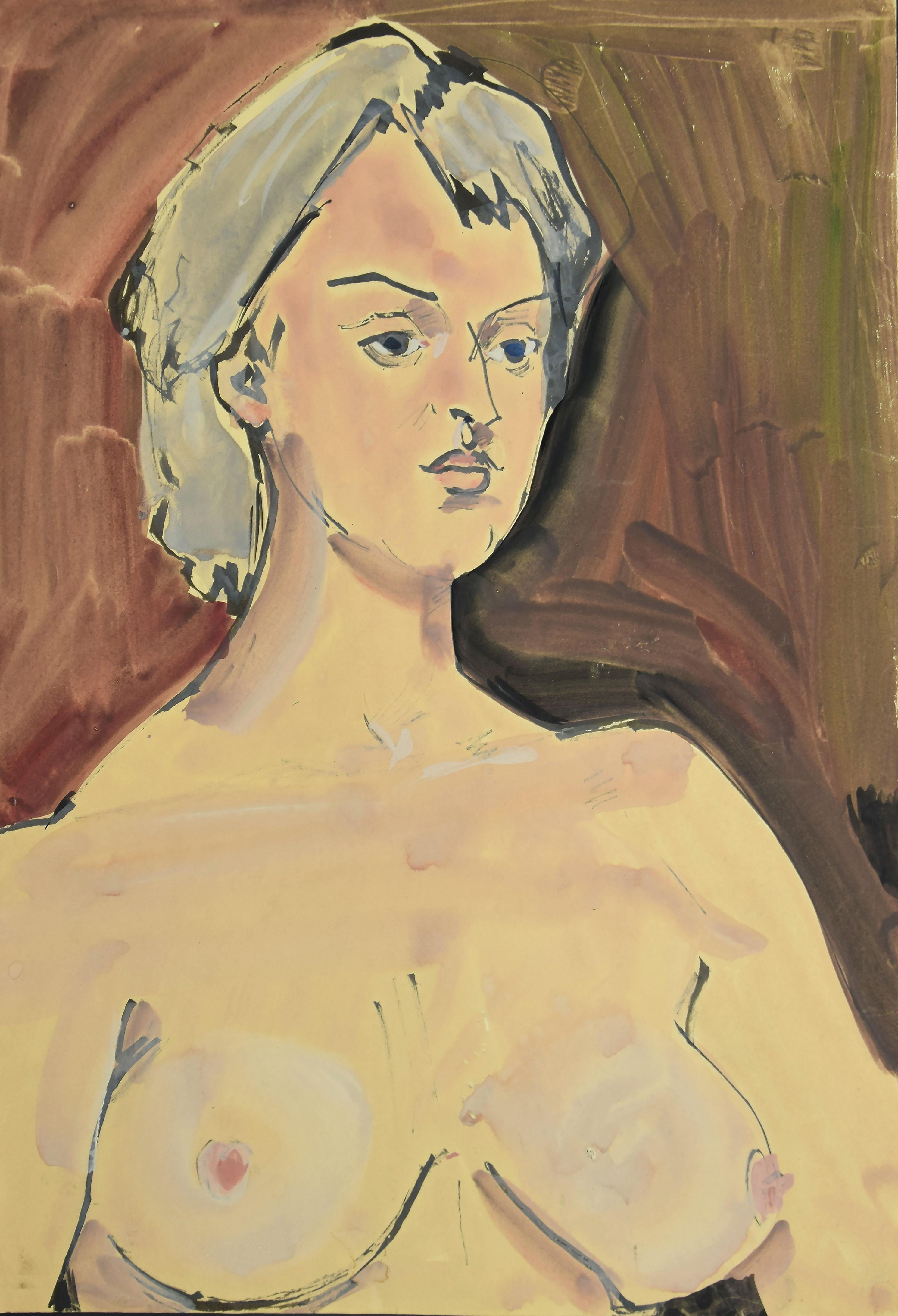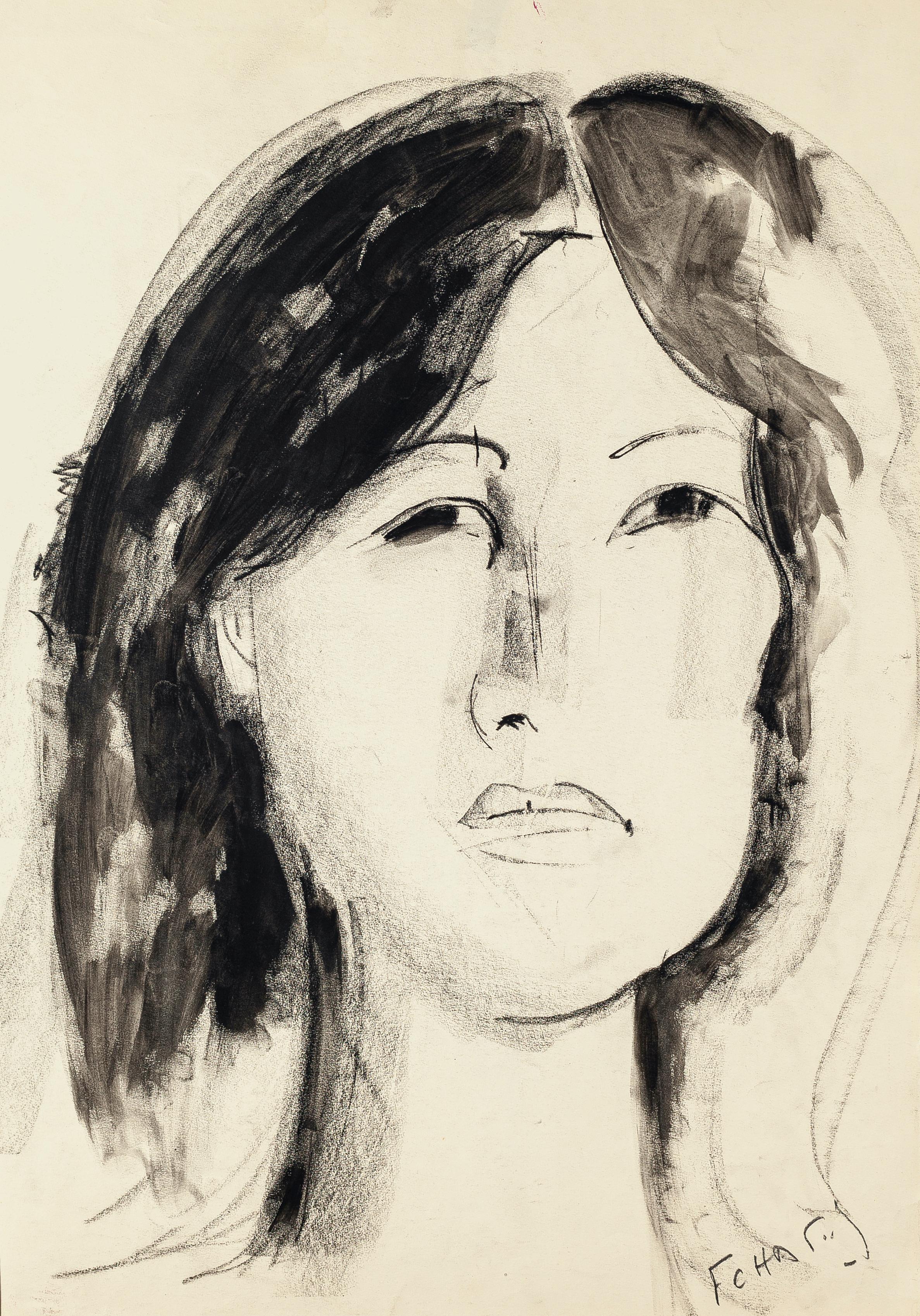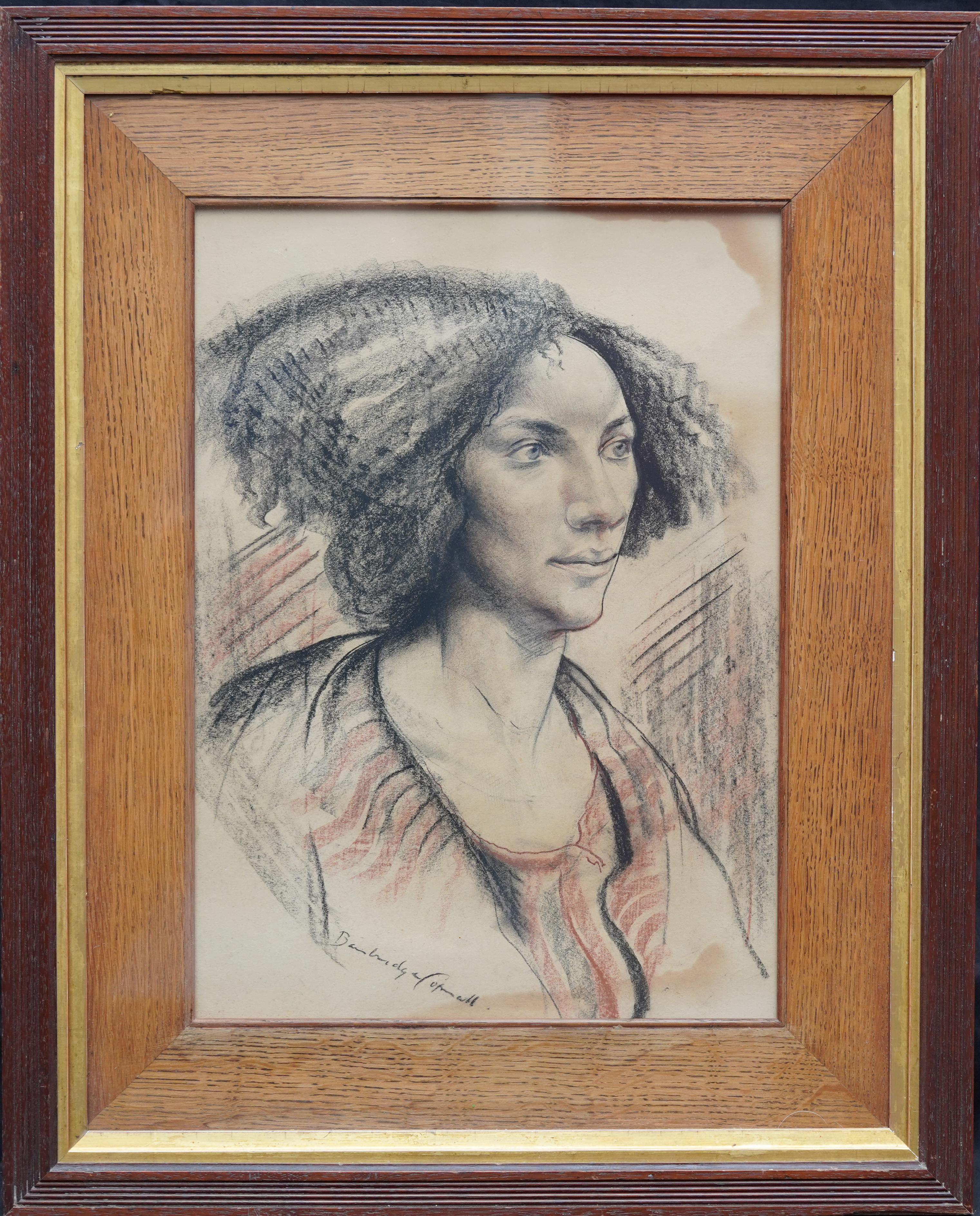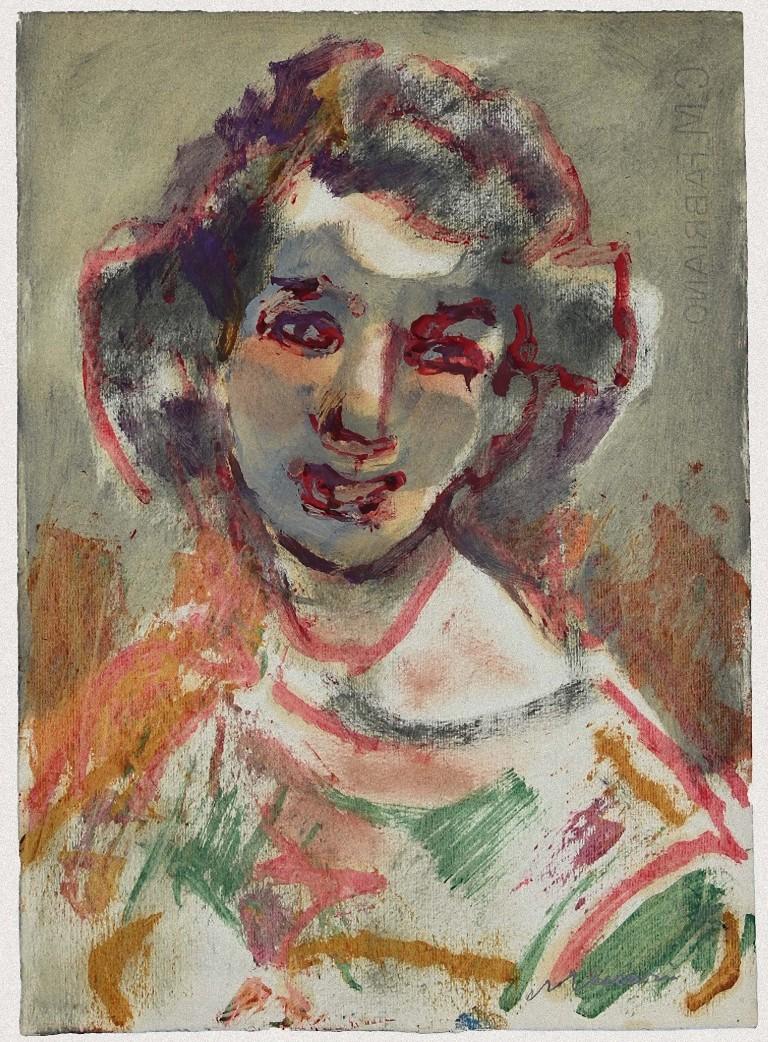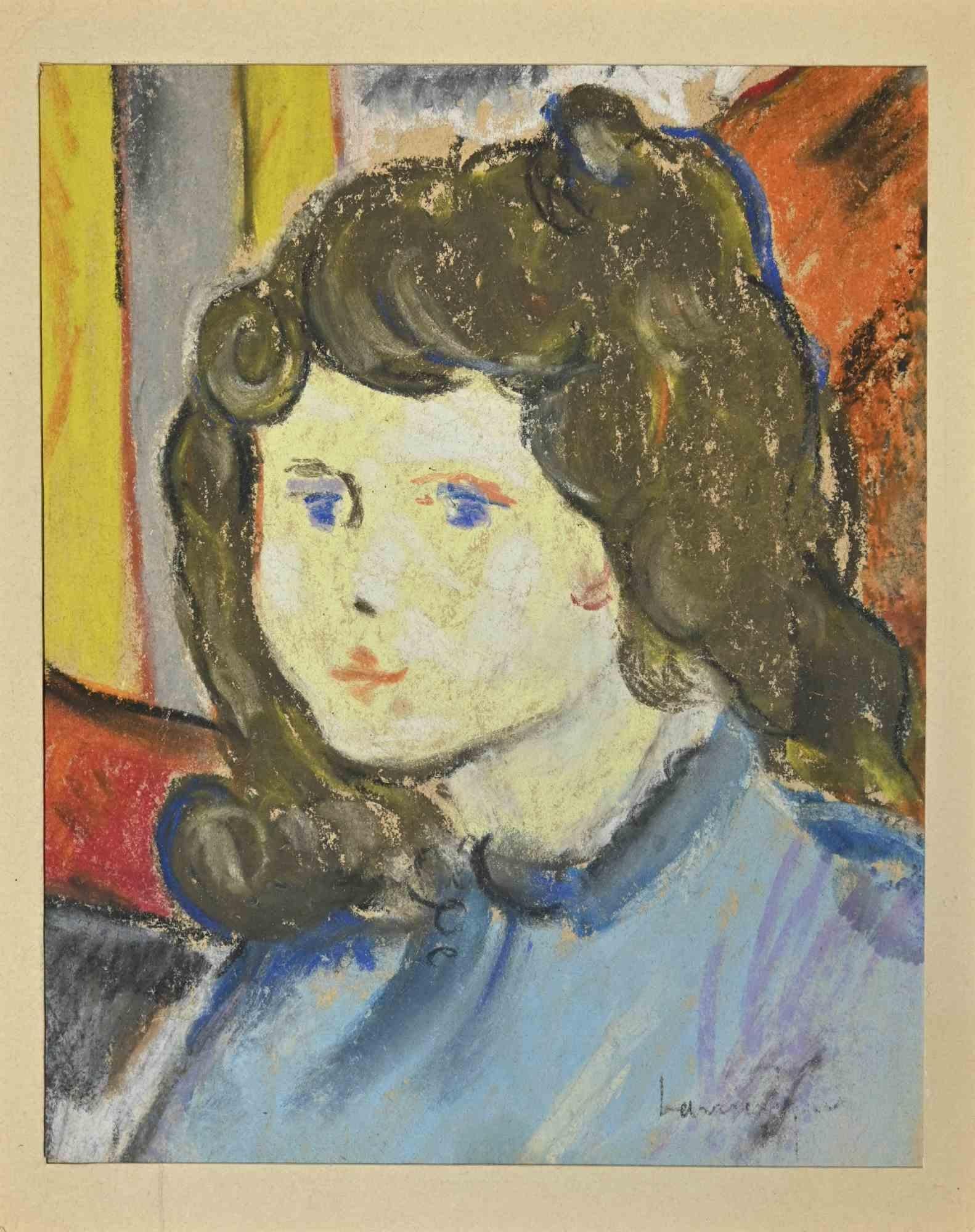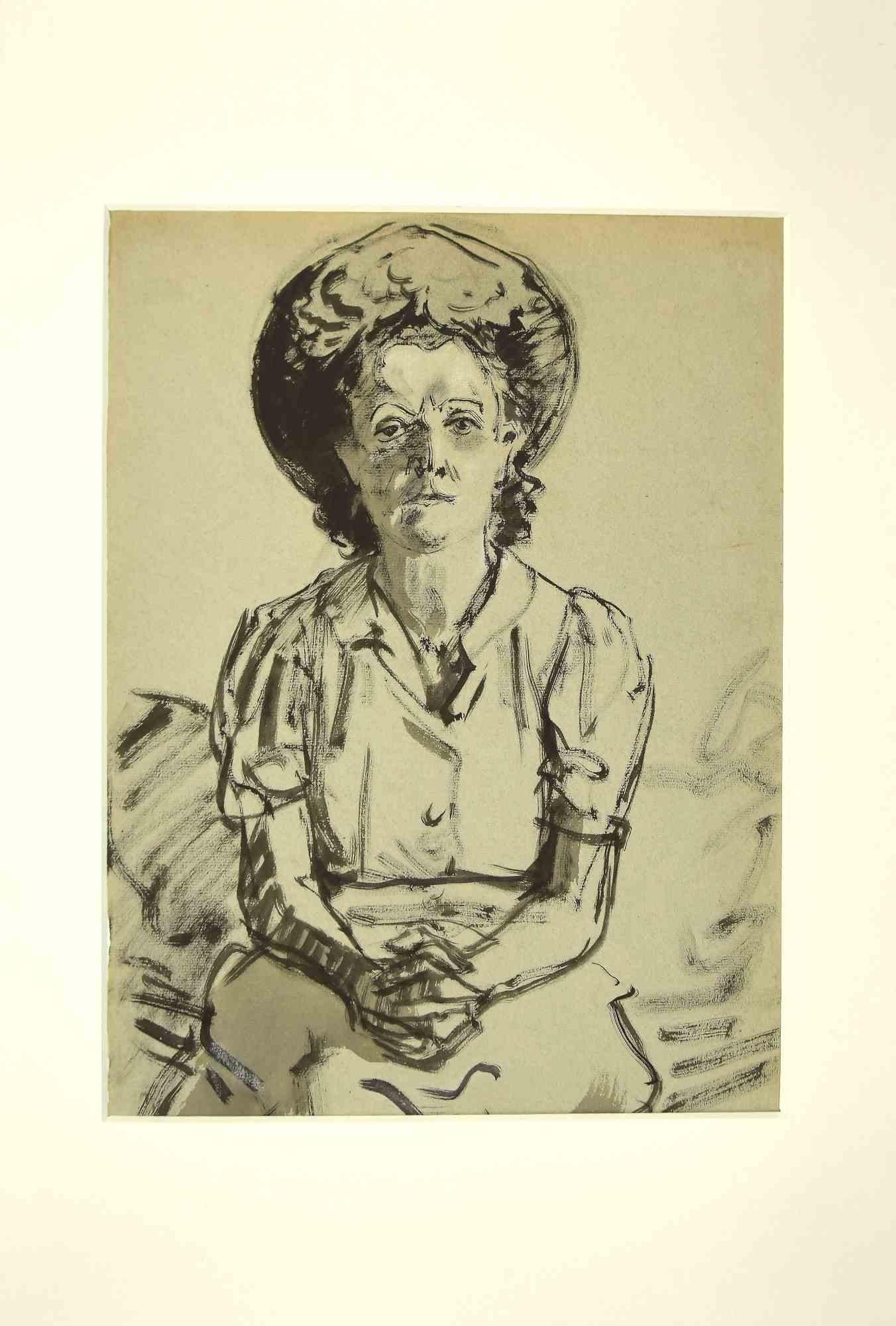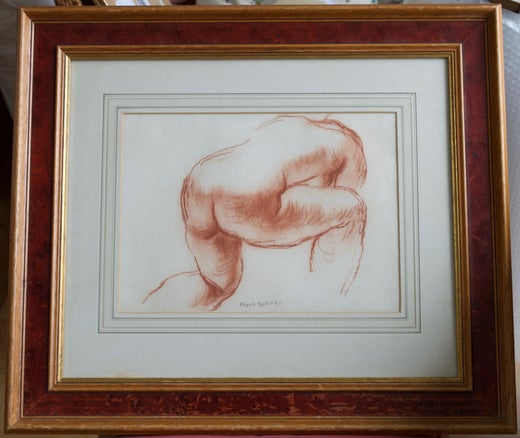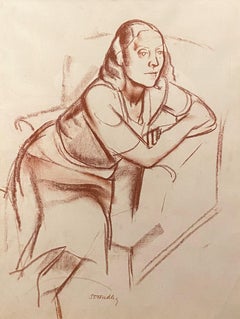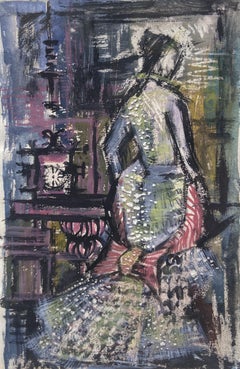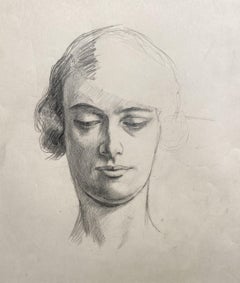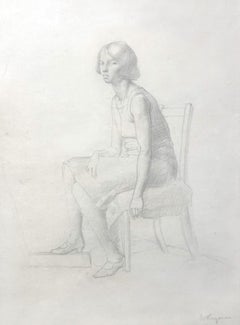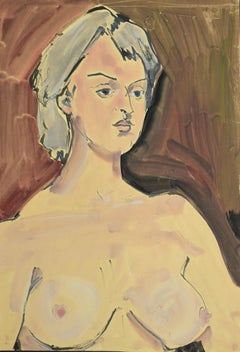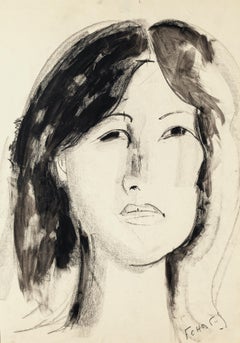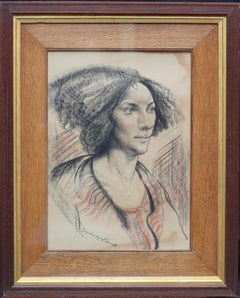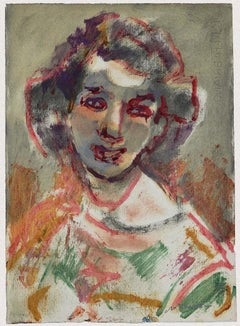Items Similar to Portrait of the Artist's Assistant, Watercolour and Ink, 20th Century British
Want more images or videos?
Request additional images or videos from the seller
1 of 6
Frank DobsonPortrait of the Artist's Assistant, Watercolour and Ink, 20th Century British
$13,355.59
£9,750
€11,438.57
CA$18,294.49
A$20,400.42
CHF 10,644.07
MX$250,320.89
NOK 135,482.07
SEK 128,366.32
DKK 85,370.27
Shipping
Retrieving quote...The 1stDibs Promise:
Authenticity Guarantee,
Money-Back Guarantee,
24-Hour Cancellation
About the Item
Watercolour and ink on graphite, signed lower right
Image size: 22 x 17 1/2 inches (56 x 44.5 cm)
Original frame
POA
Inscribed on reverse 'Frank Dobson's Assistant - Celia Gills'
Frank Dobson
Dobson, Frank (1886–1963). British sculptor, born in London, the son of an illustrator of the same name. From 1902 to 1904 he worked as an assistant to William Reynolds-Stephens. He then spent two years in Cornwall, earning his living with landscape watercolours, before winning a scholarship to Hospitalfield Art Institute, Arbroath, where he studied 1906–10.
After returning to London, he continued his studies at the City and Guilds School, Kennington, then again lived in Cornwall, where he shared a studio with Cedric Morris in Newlyn. His early work consisted mainly of paintings, the few surviving examples showing how impressed he was by Roger Fry’s Post-Impressionist exhibitions (Stanhope Forbes, whom Dobson met in Newlyn, had been shocked by his modernism). He made his first carving in 1913, but his first one-man exhibition—at the Chenil Gallery, London, in 1914—consisted of paintings and drawings. After the First World War (when he served in France with the Artists’ Rifles), he turned increasingly to sculpture, and had his first one-man exhibition as a sculptor in 1920, at the Leicester Galleries, London.
During the 1920s and 1930s Dobson gained an outstanding reputation: in 1925 Roger Fry described his work as ‘true sculpture and pure sculpture … almost the first time that such a thing has been even attempted in England’. The monumental dignity of his work was in the tradition of Maillol, and like him Dobson found the female nude the most satisfactory subject for three-dimensional composition, as in Cornucopia (University of Hull, 1925–7), described by Clive Bell as ‘the finest piece of sculpture by an Englishman since—I don’t know when’. His work was more stylized than Maillol’s, however, and his sophisticated simplifications of form made him one of the pioneers of modern sculpture in Britain.
Dobson was also outstanding as a portrait sculptor, his best-known work in this field being the head of Sir Osbert Sitwell in polished brass (Tate Gallery, London, 1923). He worked in various other materials including bronze, terracotta, and stone, and he was prominent in the revival of direct carving. His craftsmanship in all these materials was superb and he played an important role as a liberal-minded and kind-hearted teacher at the Royal College of Art, where he was professor of sculpture from 1946 to 1953.
After World War II Dobson was appointed professor of Sculpture at the Royal College of Art and awarded the CBE.
Dobson is represented in many public galleries, including the Tate Gallery, London. There was an Arts Council memorial exhibition in 1966 and more recently there was a major retrospective at the Henry Moore Institute in Leeds, in 1994.
With the rise of a younger generation led by Henry Moore, however, Dobson’s prestige as an artist dropped; his work was regarded as dated, and the memorial exhibition organized by the Arts Council in 1966 was poorly received.
Since then his reputation has greatly revived and he has again been recognized as one of the outstanding figures in 20th-century British sculpture.
- Creator:Frank Dobson (1886 - 1963, British)
- Dimensions:Height: 22 in (55.88 cm)Width: 15 in (38.1 cm)
- More Editions & Sizes:1 of 1Price: $13,356
- Medium:
- Movement & Style:
- Period:
- Condition:
- Gallery Location:London, GB
- Reference Number:1stDibs: LU52413423062
Frank Dobson
A sculptor, draughtsman and painter in oil and watercolour. Born in London, Dobson first studied at Leyton School of Art and later at the City and Guilds School, Kennington. His early paintings were much influenced by Roger Fry’s Post-Impressionist exhibitions. His first carvings date from 1913 and his first one man show, at the Chenil Gallery, was in 1914. During World War I he enlisted in the Artists’ Rifles and continued working - his large oil The Balloon Apron was acquired by the Imperial War Museum. After the war Dobson met Wyndham Lewis and exhibited with Group X in 1920 and he held his first one-man show as a sculptor at the Leicester Galleries in 1921. During the interwar Dobson consolidated his reputation as a sculptor and together with Epstein was called “a keeper of tradition” – bridging classical and modern sculpture. In 1946 Dobson was appointed professor of Sculpture at the Royal College of Art. He is represented in many public galleries including the Tate Gallery.
About the Seller
5.0
Vetted Professional Seller
Every seller passes strict standards for authenticity and reliability
Established in 2007
1stDibs seller since 2014
82 sales on 1stDibs
Typical response time: 4 hours
- ShippingRetrieving quote...Shipping from: London, United Kingdom
- Return Policy
Authenticity Guarantee
In the unlikely event there’s an issue with an item’s authenticity, contact us within 1 year for a full refund. DetailsMoney-Back Guarantee
If your item is not as described, is damaged in transit, or does not arrive, contact us within 7 days for a full refund. Details24-Hour Cancellation
You have a 24-hour grace period in which to reconsider your purchase, with no questions asked.Vetted Professional Sellers
Our world-class sellers must adhere to strict standards for service and quality, maintaining the integrity of our listings.Price-Match Guarantee
If you find that a seller listed the same item for a lower price elsewhere, we’ll match it.Trusted Global Delivery
Our best-in-class carrier network provides specialized shipping options worldwide, including custom delivery.More From This Seller
View AllWoman at Rest, Signed Charcoal Sketch, 20th Century British
By James Stroudley
Located in London, GB
Charcoal on paper, signed lower left
Image size: 15 3/4 x 21 inches (40 x 53.5 cm)
Contemporary frame
James Stroudley
Stroudley was born in London on 17 June 1906, the son of James Stroudley, showcard and ticket writer. He studied at Clapham School of Art (1923-27) and then at the Royal College of Art (1927-30), where his teachers included Alan Gwynne-Jones and William Rothenstein. As a recipient of the first Abbey Scholarship he was able to spend three years in Italy from 1930, where he absorbed the influences of Giotto and Piero della Francesca, and produced one of the last wholly satisfying decorative cycles by a Rome Scholar of the period. From 1934, he exhibited at the Royal Society of British Artists, and was elected to its membership in the following year.
From the Second World War – in which he worked with the Camouflage Unit – Stroudley taught at St Martin’s School of Art and was a visiting lecturer at the Royal Academy Schools. Though he continued to live in London, his later work, exhibited at the Royal Academy from 1955, indicated regular painting trips to Kent and Sussex coasts. However, much of his later work was abstract. In 1971, his former student, Peter Coker, paid homage to Stroudley by including his work in the exhibition ‘Pupil & Masters’, held at Westgate House, Long Melford, Suffolk.
Stroudley married three times, and his wives included the fashion artist to the Sun newspaper...
Category
Mid-20th Century Modern Figurative Drawings and Watercolors
Materials
Paper, Charcoal
Showstopper, 20th Century Ink and Watercolour Sketch, Wigan School
Located in London, GB
Ink and watercolour on paper
Image size: 13 1/2 x 9 1/2 inches (35.25 x 24.25 cm)
Framed
Created in 1958 by the artist as evidence for study in their 'Examination in Art' at Wigan A...
Category
Mid-20th Century Modern Figurative Drawings and Watercolors
Materials
Paper, Ink, Watercolor
Study of a Woman, Graphite Sketch, 20th Century British Artist, Signed
Located in London, GB
Graphite on paper, signed on reverse
Image size: 11 x 9 1/2 inches (28 x 24 cm)
Mounted and framed
Ernest Proctor
Born in Tynemouth, Northumberland, the son of a scientist, Ernest was educated at Bootham Friends' School in York and then came to Newlyn in 1907 to study with Stanhope Forbes. He quickly become recognized as the best student of the School. He acted as Assistant to Stanhope Forbes and Elizabeth Forbes...
Category
20th Century Modern Portrait Drawings and Watercolors
Materials
Paper, Graphite
Study of a Woman, Graphite Sketch, 20th Century British Artist, Signed
Located in London, GB
Graphite on paper, signed lower right
Image size: 9 x 12 1/2 inches (23 x 32 cm)
Mounted and framed
Little is known about the artist Winifred Anne Rymer apart from that her career f...
Category
20th Century Figurative Drawings and Watercolors
Materials
Graphite
Portrait of a Lady, Charcoal Drawing, 20th Century Russian
Located in London, GB
Charcoal , signed lower right and dated 'Paris 1935'
Image size: 25 x 19 inches (63.5 x 48 cm)
Original oak frame
An accomplished example of Russian art from the mid 20th century.
...
Category
1930s Art Deco Portrait Drawings and Watercolors
Materials
Charcoal
Portrait of a Lady, 20th Century Graphite on Paper
By James Stroudley
Located in London, GB
James Stroudley
1906 -1985
Portrait of a Lady
Graphite on paper
Image size: 24 x 15 inches
James Stroudley was born in London on 17 June 1906, the son of James Stroudley, showcard and ticket writer. He studied at Clapham School of Art (1923-27) and then at the Royal College of Art (1927-30), where his teachers included Alan Gwynne-Jones and William Rothenstein. As a recipient of the first Abbey Scholarship he was able to spend three years in Italy from 1930, where he absorbed the influences of Giotto and Piero della Francesca, and produced one of the last wholly satisfying decorative cycles by a Rome Scholar of the period. From 1934, he exhibited at the Royal Society of British Artists, and was elected to its membership in the following year.
From the Second World War – in which he worked with the Camouflage Unit – Stroudley taught at St Martin’s School of Art and was a visiting lecturer at the Royal Academy Schools. Though he continued to live in London, his later work, exhibited at the Royal Academy from 1955, indicated regular painting trips to Kent and Sussex coasts. However, much of his later work was abstract. In 1971, his former student, Peter Coker...
Category
20th Century Portrait Drawings and Watercolors
Materials
Paper, Graphite
You May Also Like
Portrait of a woman - Original Drawing In Tempera and Watercolor - 20th Century
By Tibor Gertler
Located in Roma, IT
Portrait of a woman is a beautiful artwork realized by Tibor Gertler.
Original drawing in tempera and watercolor. In good condition. Not signed.
This artwork represents a nude woma...
Category
Mid-20th Century Modern Portrait Drawings and Watercolors
Materials
Watercolor, Tempera
Portrait of Woman - Original Charcoal and Watercolor Drawing by F. Chapuis-1970s
Located in Roma, IT
Portrait of Woman is an original drawing in Charcoal and china on paper by François Chapuis in the 1970s
Sheet dimension: 55 x 39 cm
The state of preservation is good except for so...
Category
1970s Contemporary Portrait Paintings
Materials
Charcoal, Watercolor
Portrait of a Lady - British art Post Impressionist 40s drawing female portrait
By Edward Bainbridge Copnall
Located in London, GB
A dramatic head and shoulders portrait of a lady in coloured chalks attributed to noted British artist Edward Bainbridge Copnall. This is just a stunning artwork which dates to circa 1940.
Signed Bainbridge Copnall.
Provenance. Midlands collection.
Condition. Coloured chalks on paper, 16 inches by 13 inches and in good colour and condition. Some staining to edges.
Housed in its original gallery frame 21 by 18 inches. In excellent condition.
Edward Bainbridge Copnall MBE ( 1903-1973) was a British sculptor and painter. He was best known for his architectural and decorative sculptures featuring allegorical and religious subjects. He was the President of the Royal Society of Sculptors from 1961 - 1966. Edward Bainbridge Copnall was born in Cape Town, South Africa in 1903 and moved to Horsham, West Sussex in England as a young child after the death of his mother. His father, photographer Edward White Copnall (born 1878, Isle of Wight), lived and worked in Horsham from 1915-1962. His uncle was Liverpool-based portrait painter Frank Thomas Copnall...
Category
Early 20th Century Realist Portrait Drawings and Watercolors
Materials
Chalk
Portrait of a Woman - Original Watercolor by Mino Maccari - 1960 ca.
By Mino Maccari
Located in Roma, IT
Portrait of a Woman is a very beautiful mixed media and oil painting realized by Mino Maccari in 1960 ca.
Hand-signed by the artist on the lower right corner.
In good condition, ex...
Category
1960s Modern Figurative Drawings and Watercolors
Materials
Watercolor
Portrait - Drawing by Jean Lasnier - Mid-20th Century
Located in Roma, IT
Portrait is a drawing realized by Jean Lasnier in the Mid-20th Century.
Oil pastel and watercolor ink on paper.
Good conditions with slight foxing.
The artwork is realized through...
Category
Mid-20th Century Modern Figurative Drawings and Watercolors
Materials
Oil Pastel, Watercolor
Portrait of Woman - Original Drawing - 1950
Located in Roma, IT
Portrait of Woman is Black Marker and Watercolour realized by an unknown artist of 20th century in 1950.
Good condition on a grey paper, included a white cardboard (60x40 cm).
No s...
Category
1950s Contemporary Figurative Drawings and Watercolors
Materials
Watercolor
More Ways To Browse
Sculpture Head Portrait
Antique Brass Painting
Early 20th Century Female Portraits
Bronze Portrait Head
1930s Female Portrait
Antique Ink Stone
Used Rifles
Cornucopia Sculpture
Sculpture Terracotta Man
Maillol Bronze
Antique Rifles
Roger Moore Photographs and Posters
Stanhope Antique
Roger Fry
Roger Moore Signed
Brass Nude Female Sculpture
Henry Clive Painting
Antique St Michael
